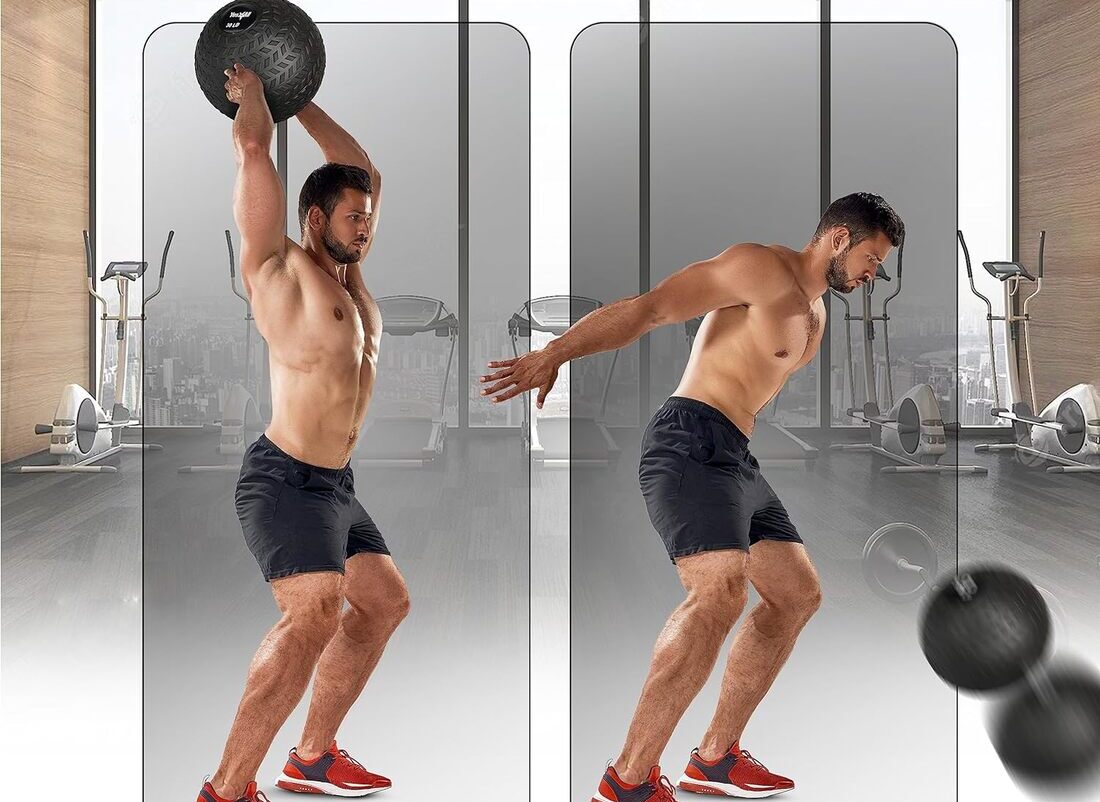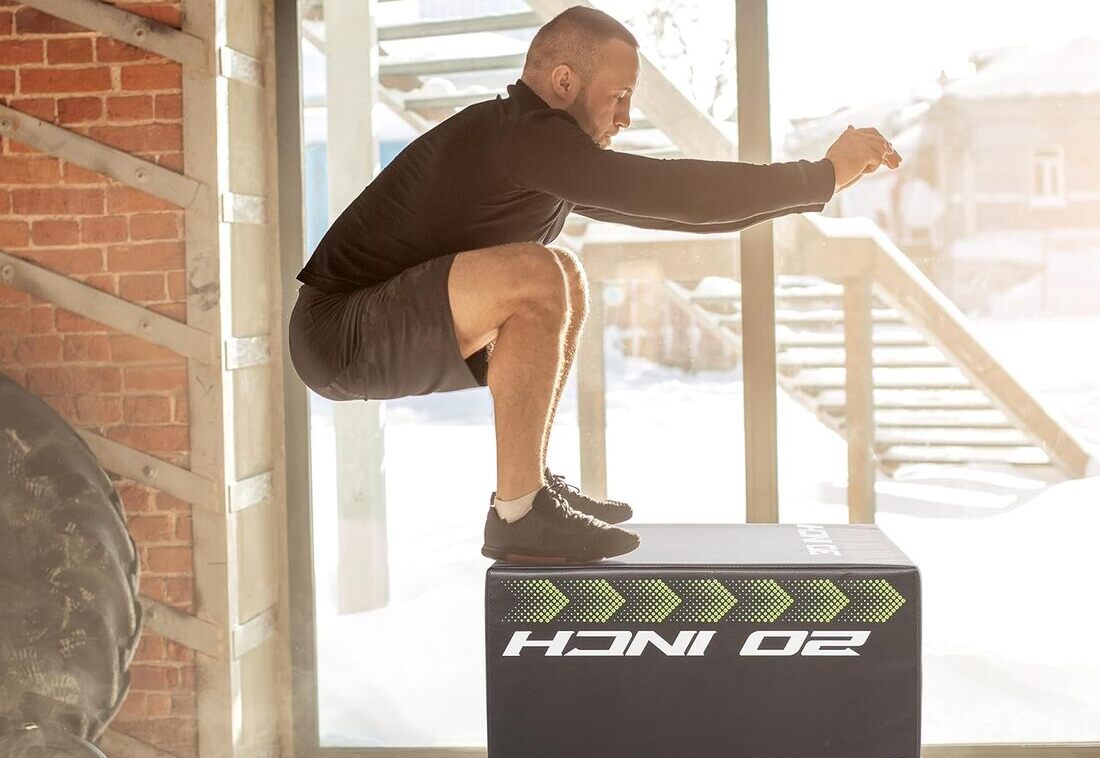Imagine leaving everything on the field, muscles burning, lungs screaming, yet somehow your opponent still manages to outmaneuver you at the last second.
The frustration can be immense.
Often, the difference between victory and defeat hinges on a single factor – reflexive strength.

Strength is essential for athletic performance, but without the ability to react quickly and translate that strength into powerful movements, raw power becomes less impactful.
This is where reflexive strength training comes in – a potent blend of strength training and reactive drills designed to bridge the gap between muscle and action.
Target Audience: This blog caters to athletes (both beginners and experienced), fitness enthusiasts, coaches, and anyone interested in optimizing their athletic performance by combining strength training with reflex development.
We’ll delve into the science behind reflexive strength training, explore various training methods, and equip you with the knowledge to integrate this approach into your workout routine.
Why Reflexive Strength Matters: Beyond Building Big Muscles
While sculpted muscles are impressive, true athletic prowess requires more than just size.
Here’s how reflexive strength training benefits athletes:
- Enhanced Reaction Times: Reflexive drills train your nervous system to react quicker to stimuli, enabling you to respond faster to on-field situations.
- Improved Power Output: Combining strength training with reactive movements allows you to translate power into explosive movements more effectively.
- Increased Coordination: Reflexive exercises often involve complex movements, leading to better body control and coordinated actions during competition.
- Reduced Injury Risk: Enhanced coordination and faster reaction times can help athletes prevent injuries caused by mistimed movements or sudden changes in direction.

By incorporating reflexive strength training, you’re not just building strength; you’re building a well-oiled athletic machine capable of reacting and performing with lightning speed.
Unveiling the Science: How Reflexive Strength Training Works
So, how does reflexive strength training translate to on-field performance?
It all boils down to the neuromuscular system.
Here’s a breakdown of the science involved:
- The Neuromuscular System: This intricate network connects your nervous system with your muscles. When you initiate a movement, your brain sends signals through your nerves, prompting your muscles to contract.
- Reflexive Training and Neural Pathways: Repetitive reflexive drills strengthen these neural pathways, allowing signals to travel faster and with greater efficiency. This translates to quicker response times and more explosive movements.
- Strength Training and Power Output: Traditional strength training builds muscle mass and strength. Reflexive strength training combines this strength with reactive movements, enabling you to leverage your newfound power into explosive actions.
Simply put, reflexive strength training optimizes communication between your brain and muscles, resulting in faster reactions and more powerful movements.
Unleashing Your Potential: Reflexive Strength Training Methods
There are various ways to incorporate reflexive strength training into your workout routine.
Here are some popular methods: (Note: Affiliate Links)
- Medicine Ball Exercises: Throwing, catching, and slamming medicine balls in various drills challenges both strength and reaction time.

- Plyometrics: Plyometric exercises involve jumping movements that train your muscles to exert maximal force in a short amount of time. Box jumps, squat jumps, and depth jumps are common examples.

- Weighted Jump Rope Drills: Adding weight to a jump rope increases the intensity of the exercise while challenging your coordination and reaction time.

- Reaction Ball Drills: Reaction balls, attached to elastic cords, rebound unpredictably when struck. Reacting quickly to catch or swat these balls improves hand-eye coordination and reaction times.

- Partner Drills: Partner drills involving quick changes in direction, throws, and catches enhance coordination and reaction to external cues.

These methods can be incorporated into your existing strength training routine or used for dedicated reflexive training sessions.
Building a Reflexive Strength Training Program: A Roadmap to Success
Here’s a step-by-step guide to building your own reflexive strength training program:
| Step | Description |
|---|---|
| 1. Assess Your Fitness Level | Before diving into complex drills, ensure you have a solid foundation in strength training and basic movement patterns. This helps prevent injuries and ensures you can perform exercises correctly. |
| 2. Choose Your Exercises | Select a combination of exercises that target different muscle groups and involve reactive movements. Consider factors like your sport and personal limitations. Examples include agility ladder drills, reaction ball exercises, and plyometric jumps. |
| 3. Start Light and Gradually Increase Intensity | Begin with lighter weights or lower plyometric heights and gradually progress to more challenging variations as you get stronger and more coordinated. This helps your body adapt and reduces the risk of injury. |
| 4. Prioritize Proper Form | Always prioritize proper form over heavier weights or higher jumps. Incorrect technique can lead to injuries and hinder progress. Focus on controlled movements and maintaining good posture. |
| 5. Warm-up Thoroughly | Perform dynamic stretches and light cardio before your reflexive training session to prepare your body for quick movements. This increases blood flow to your muscles and reduces the risk of injury. |
| 6. Include Rest Days | Allow your body adequate recovery time between reflexive training sessions. Aim for at least 48 hours of rest for the same muscle groups involved. This helps prevent overuse injuries and promotes muscle growth. |
| 7. Track Your Progress | Monitor your performance metrics over time. This could include increased jump height, faster reaction times measured with reaction training apps, or improved performance in sport-specific drills. Keeping a training journal can be helpful. |
| 8. Don’t Overtrain | Listen to your body and avoid overtraining. If you experience pain or excessive fatigue, take a rest day or reduce training intensity. Overtraining can lead to burnout and injuries. |
| 9. Consider Consulting a Coach | A qualified strength and conditioning coach can help you design a personalized reflexive strength training program tailored to your specific needs and goals. They can provide expert guidance and ensure you’re performing exercises correctly. |
Remember, consistency is key.
By incorporating reflexive strength training into your routine and progressively challenging yourself, you’ll witness a noticeable improvement in your reaction times, power output, and overall athletic performance.
Key Takeaways: Power Up Your Performance with Reflexive Strength Training
- Reflexive strength training bridges the gap between strength and speed. It combines strength training with reactive drills to enhance reaction times and power output.
- Improved coordination, reduced injury risk, and increased power are some of the key benefits athletes can reap from reflexive strength training.
- The neuromuscular system plays a crucial role. Reflexive training strengthens neural pathways, allowing signals to travel faster and with greater efficiency, leading to quicker reactions.
- Medicine ball exercises, plyometrics, weighted jump rope drills, reaction ball drills, and partner drills are some popular methods for reflexive strength training.
- Building a successful reflexive strength training program involves proper planning, progressive overload, rest days, and tracking your progress. Consider working with a coach for personalized guidance.
FAQs: Unleashing Your Inner Reflexive Strength Champion
Here are some frequently asked questions regarding reflexive strength training:
- Is reflexive strength training suitable for all athletes?
Yes, reflexive strength training can benefit athletes of all levels and sports. However, it’s important to adapt exercises and intensity based on your experience and fitness level.
- Can I do reflexive strength training at home?
Absolutely! Many reflexive drills like medicine ball throws against a wall or weighted jump rope exercises require minimal equipment and can be performed at home.
- How often should I incorporate reflexive strength training into my routine?
Aim for 2-3 dedicated reflexive strength training sessions per week, spaced out to allow for proper recovery. You can also integrate elements of reflexive training into your regular strength workouts.
- What are some safety precautions to keep in mind?
Always prioritize proper form and avoid using weights that are too heavy. Begin with lower intensity and gradually progress to prevent injuries.
Conclusion: Train Smarter, React Faster, Dominate Your Sport
Reflexive strength training is a powerful tool for athletes seeking to elevate their performance to the next level.
By merging strength training with reactive drills, you can bridge the gap between raw power and explosive movement, translating into faster reactions, increased power output, and ultimately, athletic dominance.
So, are you ready to unleash your inner reflexive strength champion?
Incorporate these principles into your workout routine, push your limits, and witness the transformation in your athletic potential!
This blog post complements our previous guide on the importance of reflexes for athletes by providing actionable strategies for advanced reflex training used by elite athletes.
Citation 1
- Title: The Neuromuscular System and Its Role in Human Movement
- Authors: Michael J. Ryan & Steven C. Brown
- Link: The Neuromuscular System | SpringerLink
Citation 2
- Title: Does plyometric training improve vertical jump height? A meta-analytical review
- Authors: Goran Markovic, Robert U. Newton, et al.
- Link: Does plyometric training improve vertical jump height? | British Journal of Sports Medicine
